
6/27 Friday
The altitude hits us the minute we step off the plane: an excruciating headache. As promised, the hotel is there to meet us and after collecting our bags we speed off to Torre Dorada, home base for the next ten days. Cusco is a blur of tin houses, dusty roads, and loose dogs. The poverty is overwhelming – made more so by the beauty of the valley in which the city sits. The mountains rise up around us: now brown during dry season. We muddle through check-in, thinking only of our bed upstairs. Raphael is eager to explain all that Cusco has to offer. We can barely concentrate. Finally we’re allowed into our room and fall gratefully into bed.

We’re given a ride into the city. The Cathedral dominates the main square: huge and imposing. The street vendors are relentless; they have taken pestering to an art. A young girl recites the US presidents from George W. Bush back to George Washington. She caps it off with “Hasta la vista, baby!” Impressed, we buy a puma finger puppet.

6/28 Saturday
We wake up feeling better and head into town to explore. Torre Dorada offers chauffeur service whenever and where ever we wish to go. The roads are a well choreographed ballet of near misses. As passengers, it’s a thrill-ride that leaves us giddy. We’re dropped off at the market at San Blas. We plan to walk downhill to the main square. A man has a table full of intricately carved gourds. He captures our attention by carving a llama on the bottom of one before handing it to us.

The road is so narrow we hug the walls as cars speed by. The steepness does nothing to slow them down. We end up at Jack’s Café. We had lunch here yesterday. We head towards the main square but on the way stop at the Museum of Pre-Columbian Art. The ancient pottery, silver, gold, and shell jewelry are as striking today as when they were crafted over 1,000 years ago.


We walk to Qorikancha: The Temple of the Sun. It is a beautiful amalgamation of Inca and Spanish architecture. Later tonight we will drive by and see it lit with dozens of spotlights. But now the altitude overwhelms us. Heads pounding, we head back to the hotel. A nap perks us up but we begin to worry about the hike, just a day away. After dinner we stroll around the main square. There is a live band playing on the steps of the Cathedral. The cold air and frenetic pace revitalize us.
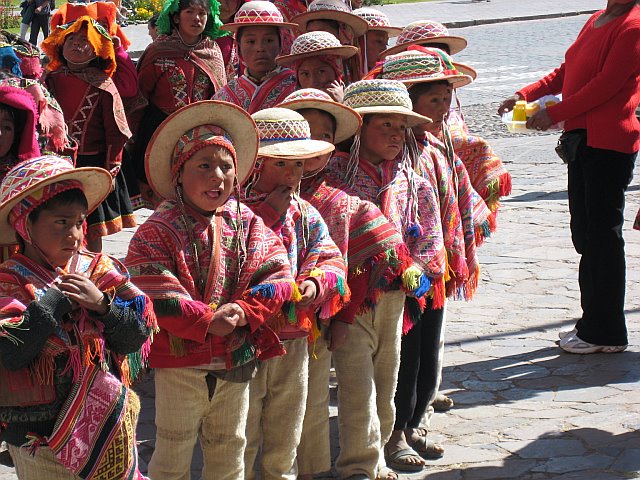
6/29 Sunday
We wake early and head to Pisac with Dayana, our guide. She is young, charming, and a wealth of information about Inca culture.
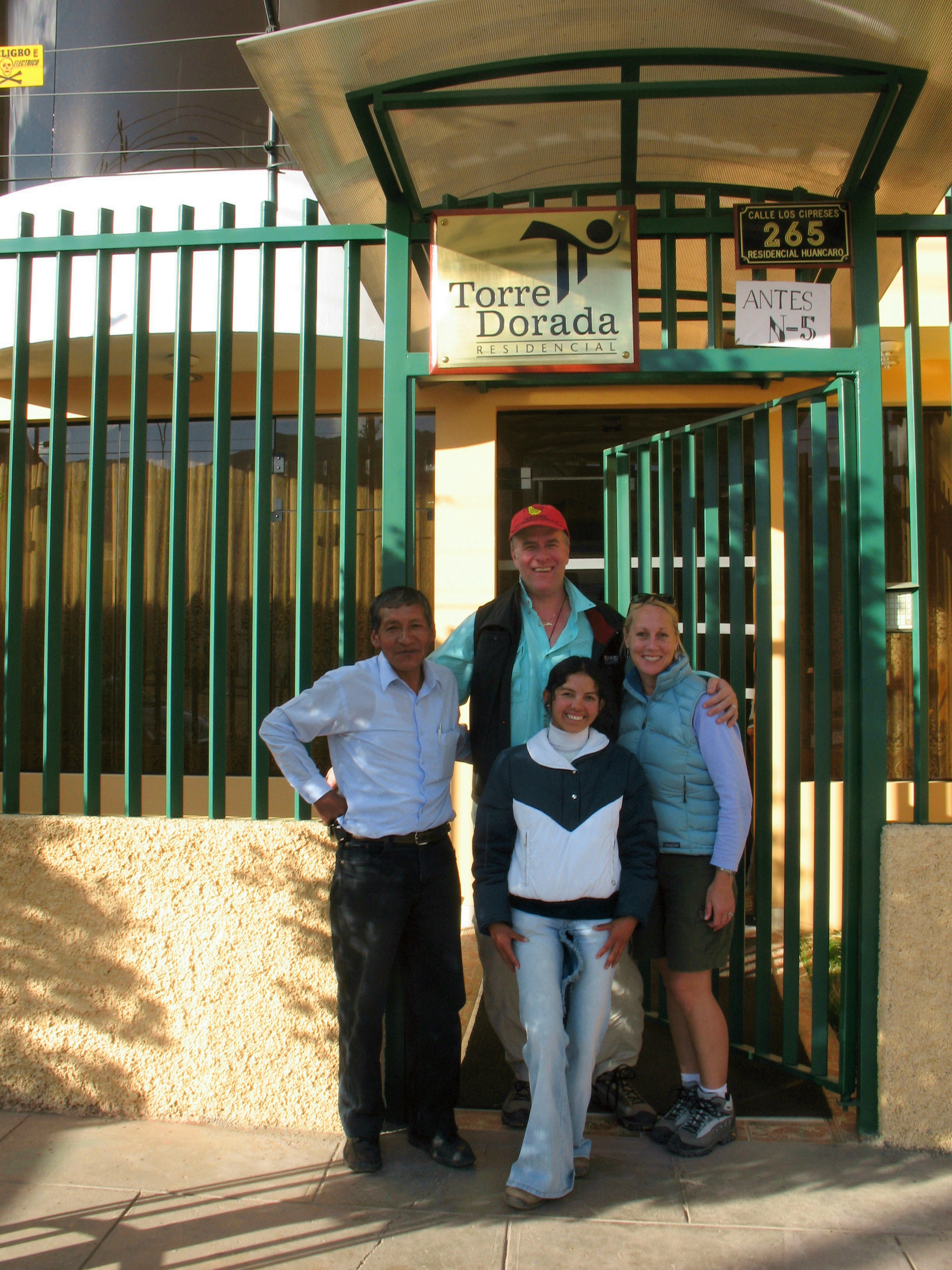
We drive up and up from Cusco and then start our descent into the Sacred Valley. The valley is named for the Urubamba River, we learn, not the many ruins. It is so fertile crops grow year round. The view is breath-taking.

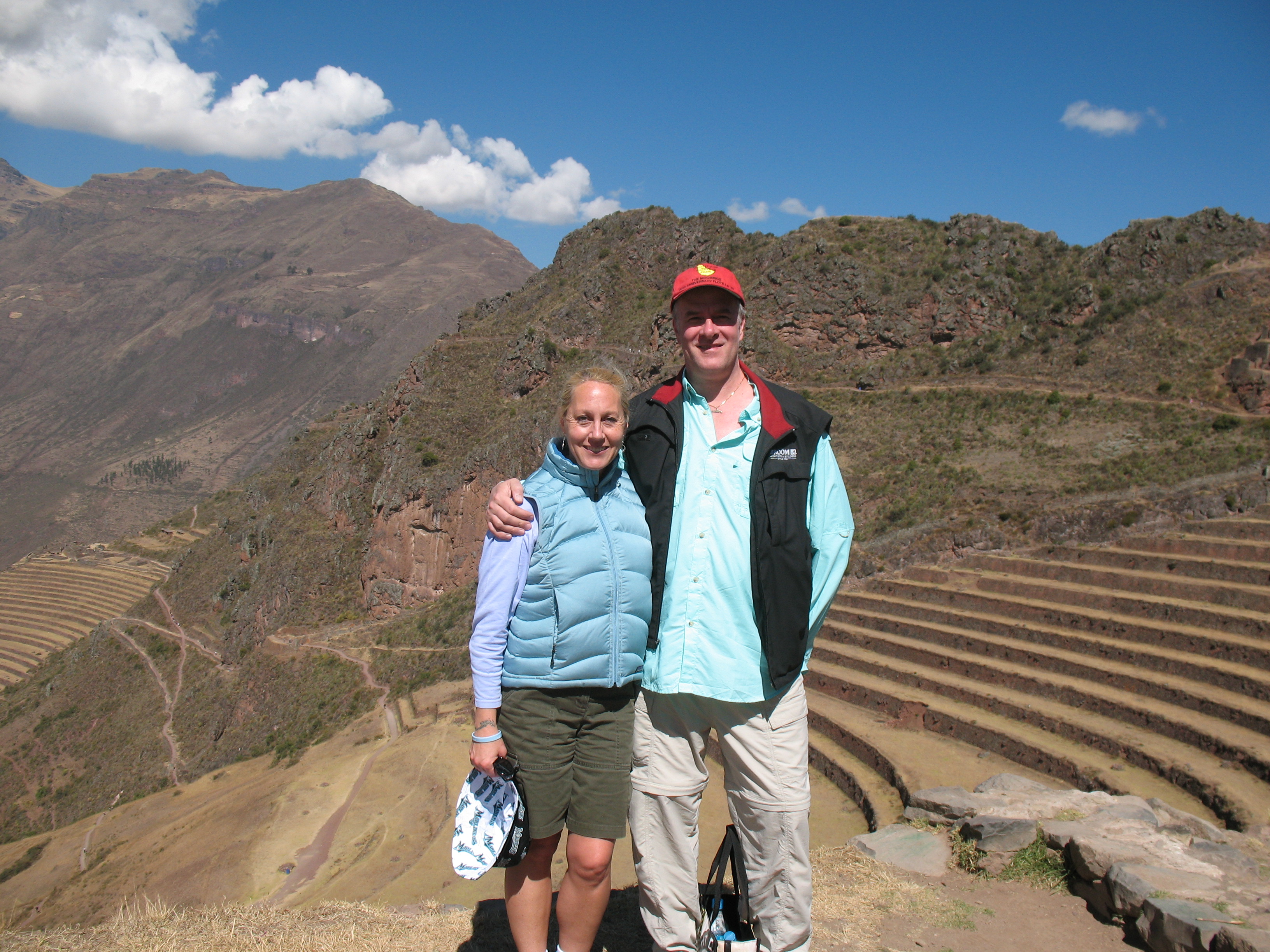
Santiago, our driver, takes us to the top of the mountain. An archeologist once suggested that all Inca terraces were built to resemble sacred animals. Pisac is supposed to be the shape of a condor. I can see wings – sort of. Dayana suggests that the archeologist may have been smoking something.
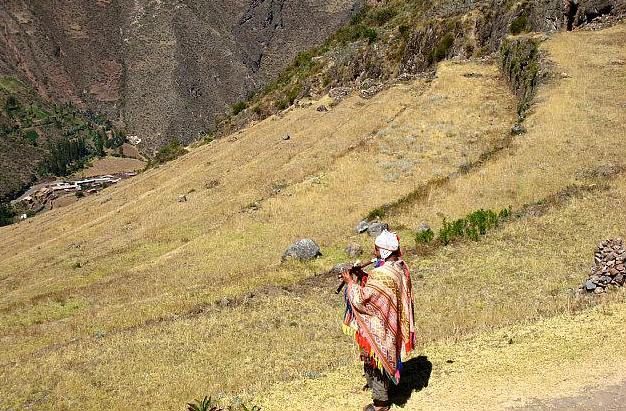
Our memories of Pisac will forever be accompanied by the song of the Andean flute. We hear the haunting melody long before we see him and long after we have passed him on the path. Dayana is so passionate. We learn much about these ancient people. It takes us 2 ½ hours to hike through the ruins, some parts so steep and narrow we cling to the rock walls. The headache comes back. Dayana picks wild mint and crushes the leaves in her hands. We inhale the sweet, strong smell. The headache retreats. “Remember this on the trail,” she says. We start our final ascent up to the parking lot where Santiago is waiting. Dayana stops to rest and entertains us with a beautiful Inca song.

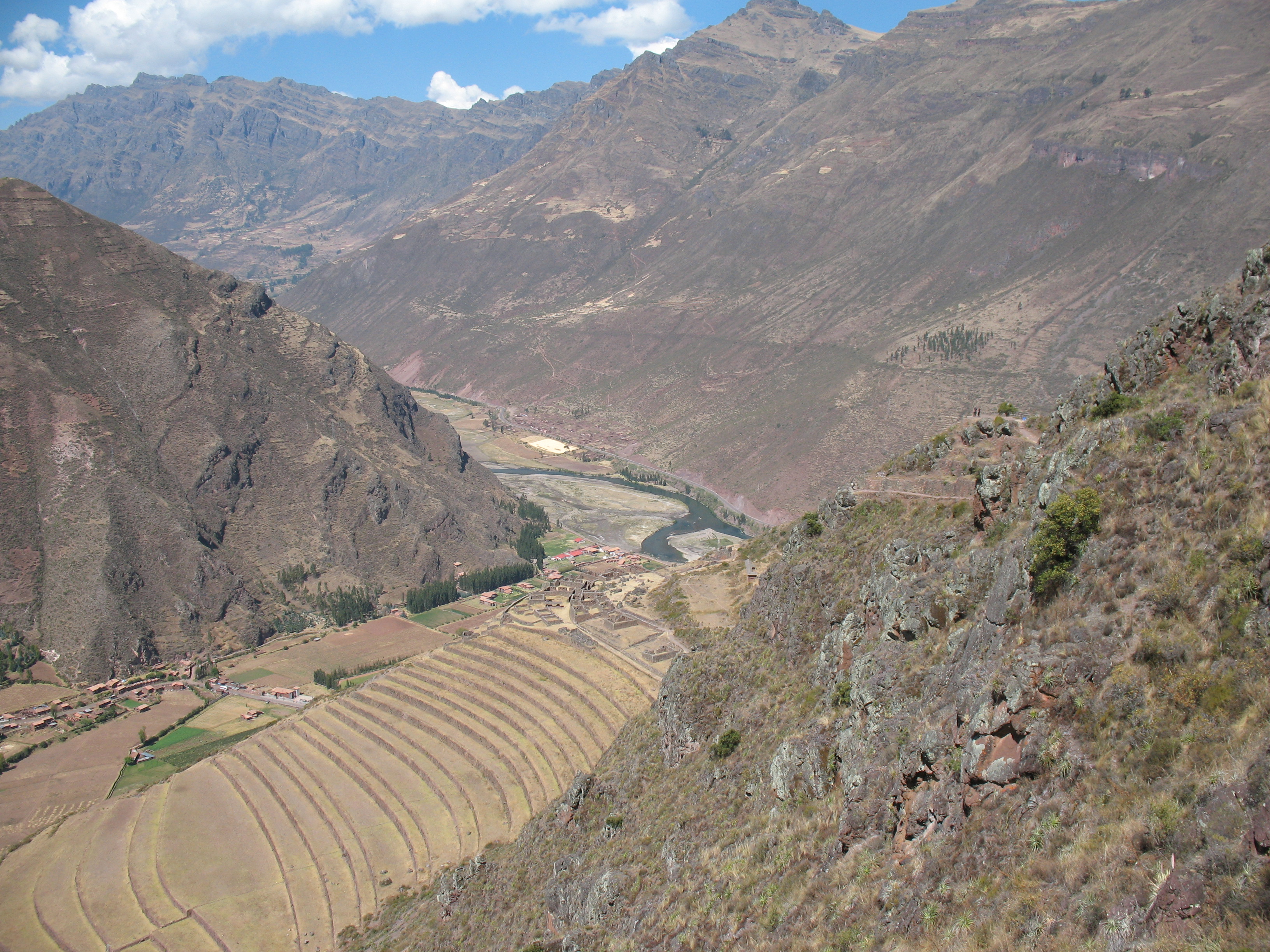

We drive down the mountain to town. Perched on a balcony for lunch we have a birds eye view of the bustling market. A solemn procession of St. Joseph parades past, church bells clanging. We peruse the market: a kaleidoscope of colors and textures, sounds and smells. Overwhelmed we purchase almost nothing. TG buys an Andean cross pendant and two stone bracelets for me. We find our way back to the car where Santiago and Dayana are waiting.


Next stop: Awarakancha, the alpaca farm. Delighted we feed the gentle animals handfuls of alfalfa. I am swarmed by five calves, tugging at the greens in my hand. We see how the wool is dyed using natural plants, minerals, even insects, and then how it is woven. Lastly we visit the shop but are too tired to do more than look.


We meet at the SAS office at 6:00pm for our briefing. The worst of the altitude sickness is past. We both feel well enough to go. I have sworn TG to secrecy regarding my stroke. I am confident in my ability but do not want anyone to worry about my health, not even for one second. Our group numbers twelve and we are by far the oldest.
6/30 Monday
The bus leaves Cusco at 5:45am. Another couple has dropped out: we are down to ten. It climbs high through the mountains to the town of Ollantaytambo. The trail begins at Km 82. By 10:00 we are through the formalities and on our way. The sun is hot, the path dusty. The Urubamba River roars to our right, surrounded by towering peaks. The glacier, Veronica, rises above: snow-covered and majestic.



The pace is easy but we are grateful for the rest stops. Virgilio, our guide, pauses to let us cool off in a mountain spring. The water is icy cold, glacier fed. The path takes some strange turns. At times it seems to run straight through someone’s front yard. By lunch we’re starving. An unexpected surprise: all the campsites have running water and flush toilets. This is a land of abundant water. After lunch the real work begins. The plan is to climb past the village of Wayllabamba, two kilometers up the mountain, in order to shorten tomorrow’s climb. We have enough time to stop at a trout farm. We negotiate 4 soles, about $1.30, and a chocolate bar for the ten of us to tour the farm.


The path has turned upward; we are climbing through the high jungle. Through the thick growth we catch glimpses of towering green peaks to our right, on the other side of the rushing stream. The air smells clean and sweet.

By now the group has split. There is the A-team, very fast and always ahead. And there is us. Virgilio tells us that we are average, not slow. We arrive at camp at 5:30 – just before dark.

The porters are there, the tents set up and waiting for us. We have already come to respect these men. They race ahead carrying our food and supplies, most in bare feet with simple sandals. One carries a propane tank on his back. Although we don’t know it yet, we will dine like Inca kings this week. After dinner the sky is ablaze with more stars than you can imagine. We see the Southern Cross right above our heads. Virgilio points out an Inca constellation: the puma’s tail.

7/1 Tuesday
5:45 wake up call. A quick breakfast and we resume our ascent.


We are still in the high jungle. The trees form a canopy so thick overhead that we cannot see the mountains towering above us. The stream runs along side. It is an enchanted forest. The path continues to rise, relentlessly up and up. Lungs burning we try to pace ourselves: we have a long way to go before we reach the top of Dead Woman’s Pass.

We started early to avoid the hot sun on our steep ascent. The trees give way to smaller bushes and shrubs. We are at the frost line. At this hour there is still frost on the ground. Our guide Elvis tells us that the glacier on the far mountain has been shrinking: a result of global warming.



Still we climb, up and up. It seems forever. We are grateful for the extra 2 kilometers we put in yesterday. We see the sun rise over the mountain. By the time we have taken off a layer and applied sun screen we are bathed in sunshine. It is warm and bright. We can see people high above us, crawling up the side of the mountain like ants. Gradually they take human form and then finally the summit: 4,215 meters. We pause to catch our breath. The whole range of the Andes spreads out before us in all directions. I feel I can see forever. The view is beyond words.


We start down. It is another 1 ½ hours to camp for lunch. Imagine the steepest set of stairs, now replace with jagged rocks. Andy’s knees are screaming and I am in absolute terror. The more fatigued I am the worse my balance, and I am exhausted.

The afternoon is more of the same. First we climb up again, the rocks just as jagged and steep. We have come to appreciate the ascents. As much as our lungs burn and hearts pound it is a welcome relief to our aching knees. After 300 meters we reach the top of the second pass. Our lunch camp is a tiny dot below us.

We start down; this time Elvis stays with me. He holds my hand and asks me to teach him American slang. I teach him peeps, bling, and comfy. It keeps my mind off my lack of balance.
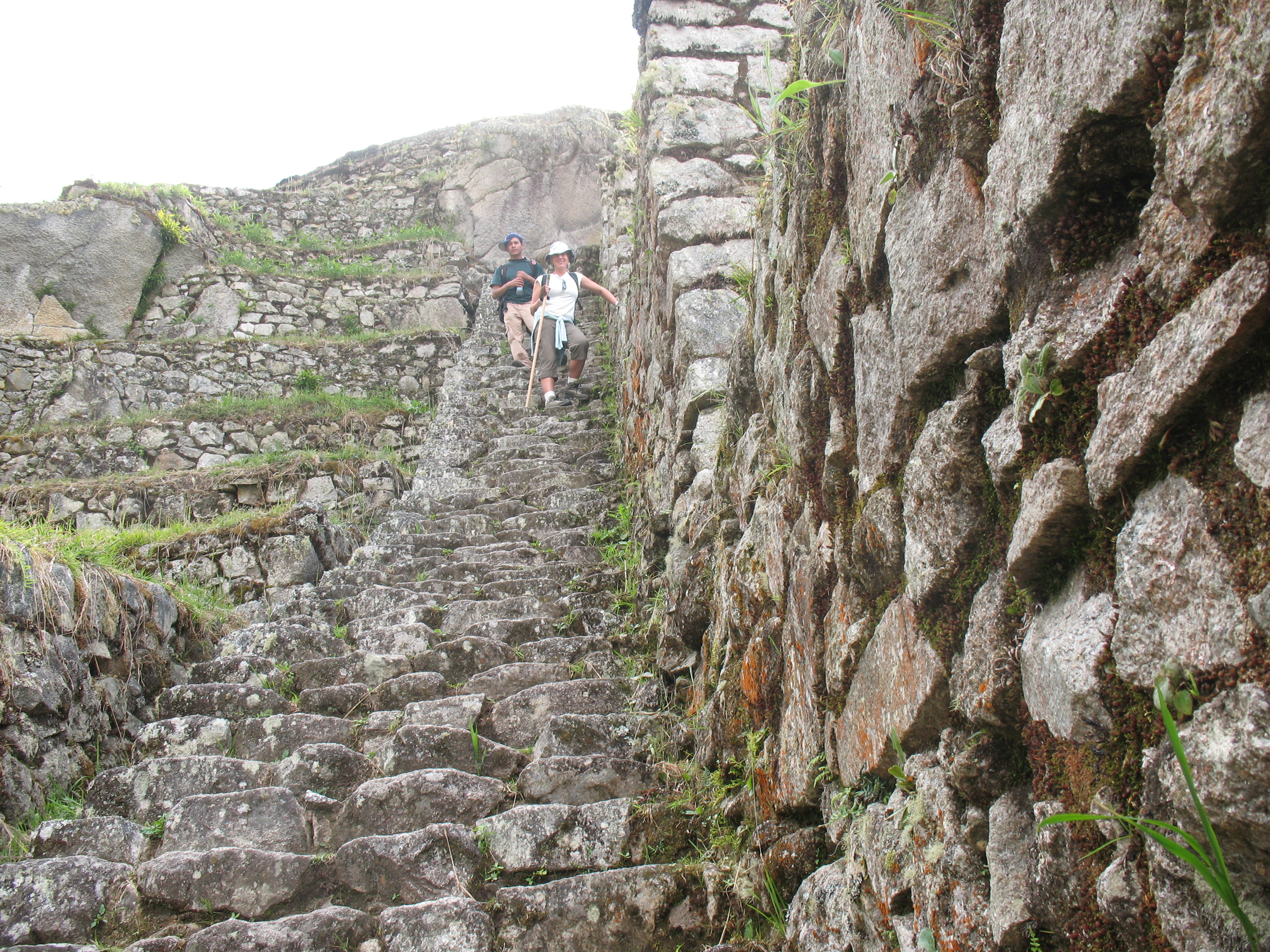
Far behind the A-team, we choose to skip the last ruin and head straight to camp. The porters are laughing at us. In Quechua they say “Look — the old people arrived first!”


7/2 Wednesday
Final day to Winaywayna. We are allowed to sleep until 8:00 this morning. The first part of the walk is the most beautiful thus far. The views of the 6,000+ meter glacier, Salkantay, are amazing. Virgilio points out a dry lake – basically a marsh but so deep horses have been lost. The mountainside is covered with moss. It looks like a coral reef. He pushes in a walking stick as far as the tip.

We see beautiful orchids, lupine, and other native flowers. Blue and green hummingbirds flutter back and forth across the path. The Andes are a continuous line of pointed M’s, colored green, with the white peaks of Salkantay, Veronica, and other glaciers looming up in between. Awesome, wondrous, beautiful all seem to fall short. I know I will never be able to describe this back home.


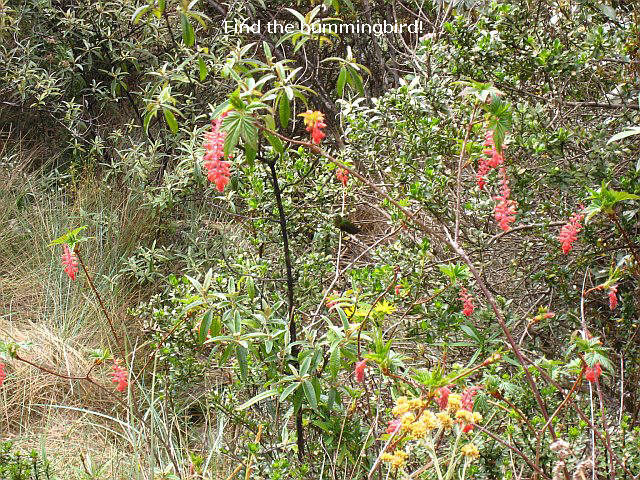
Virgilio talks about the construction of the trail – every detail designed for safety and speed. From the white granite stone to prevent slipping to the slight inward incline of the path itself it is an architectural wonder. We climb only 300 meters today. It seems easy after yesterday.
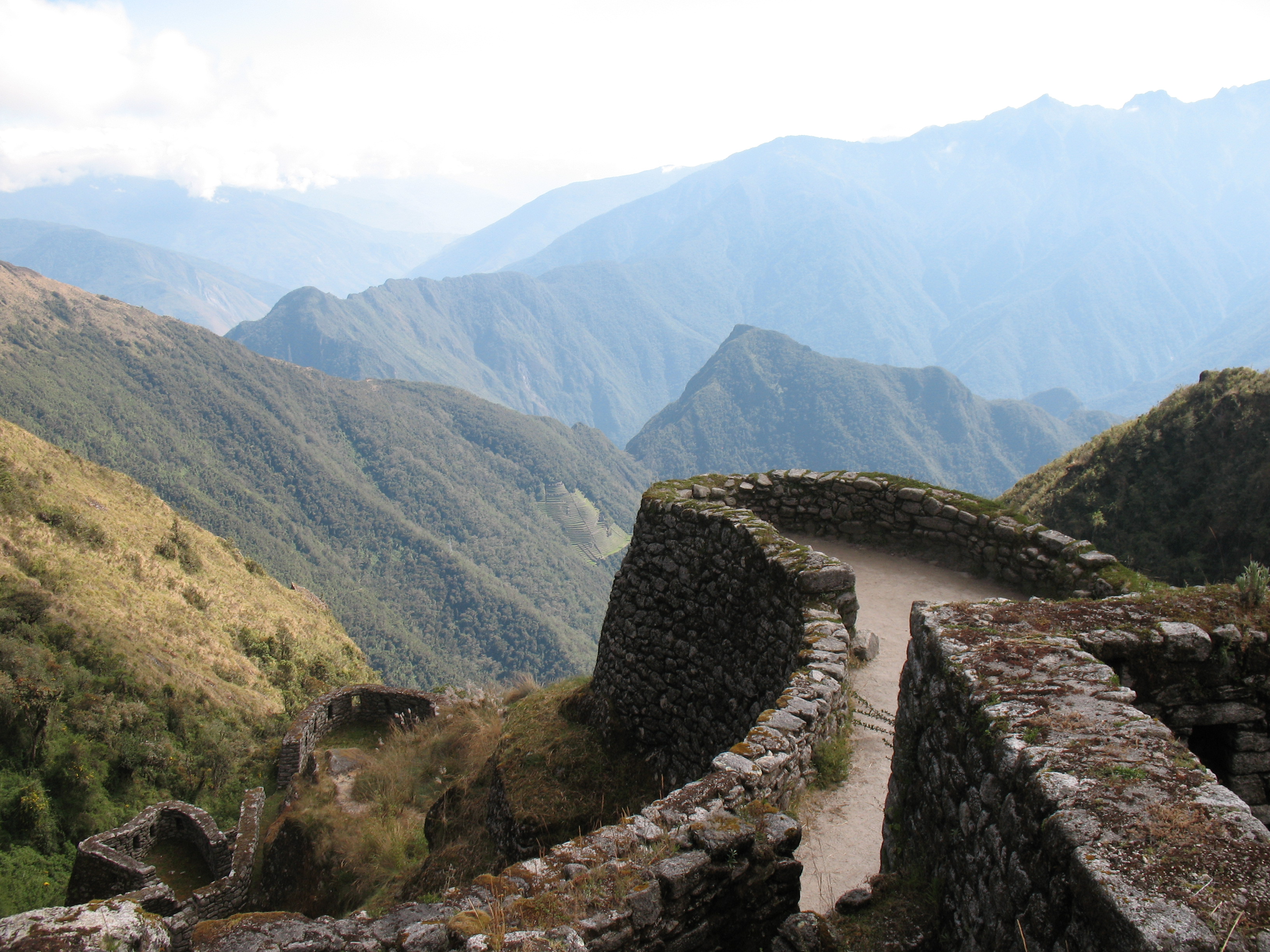
We stop at Phuyupatamarka; a remarkable ruin Virgilio tells us was for spiritual and astronomical study. We christen ourselves with cold water from the Fountain of Youth. At the top he points out holes perfectly aligned with the four points of the Southern Cross. He talks about the Inca: their paths of communication, the strange ways of their nobility. These people had running water, proper plumbing, and a sophisticated calendar for planting. They had figured out morphine and were performing successful brain surgery during the same time our ancestors in Europe were living in mud huts and fighting off the plague. He talks for a long time. We grow cold standing on the mountain but it is fascinating. We hang on his every word.
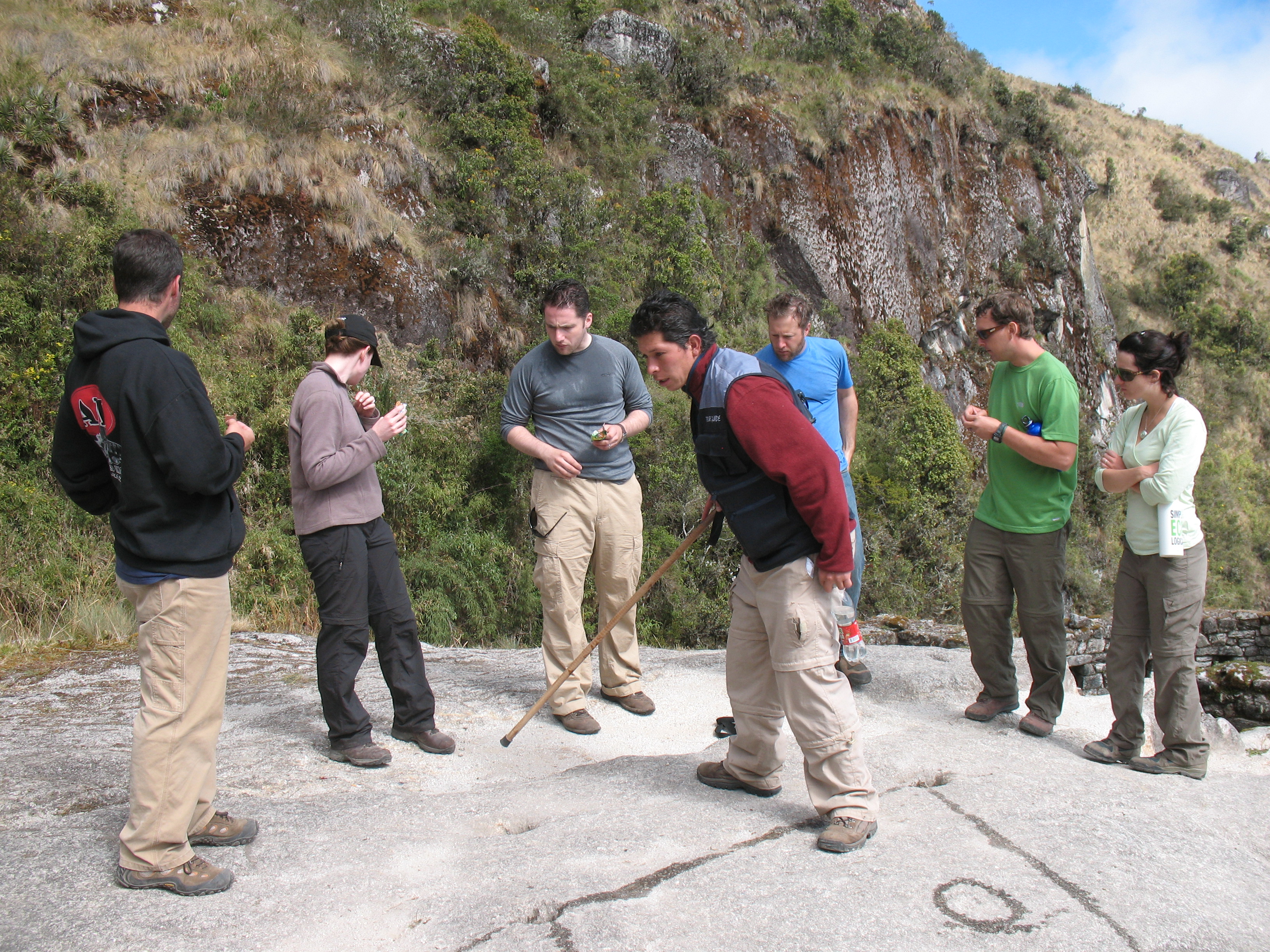
We start down. It is a long descent of over 2,000 stone stairs. They are not as jagged as yesterday but just as steep. Elvis helps me down the mountain. He is my guardian angel. We join the group at the power lines.
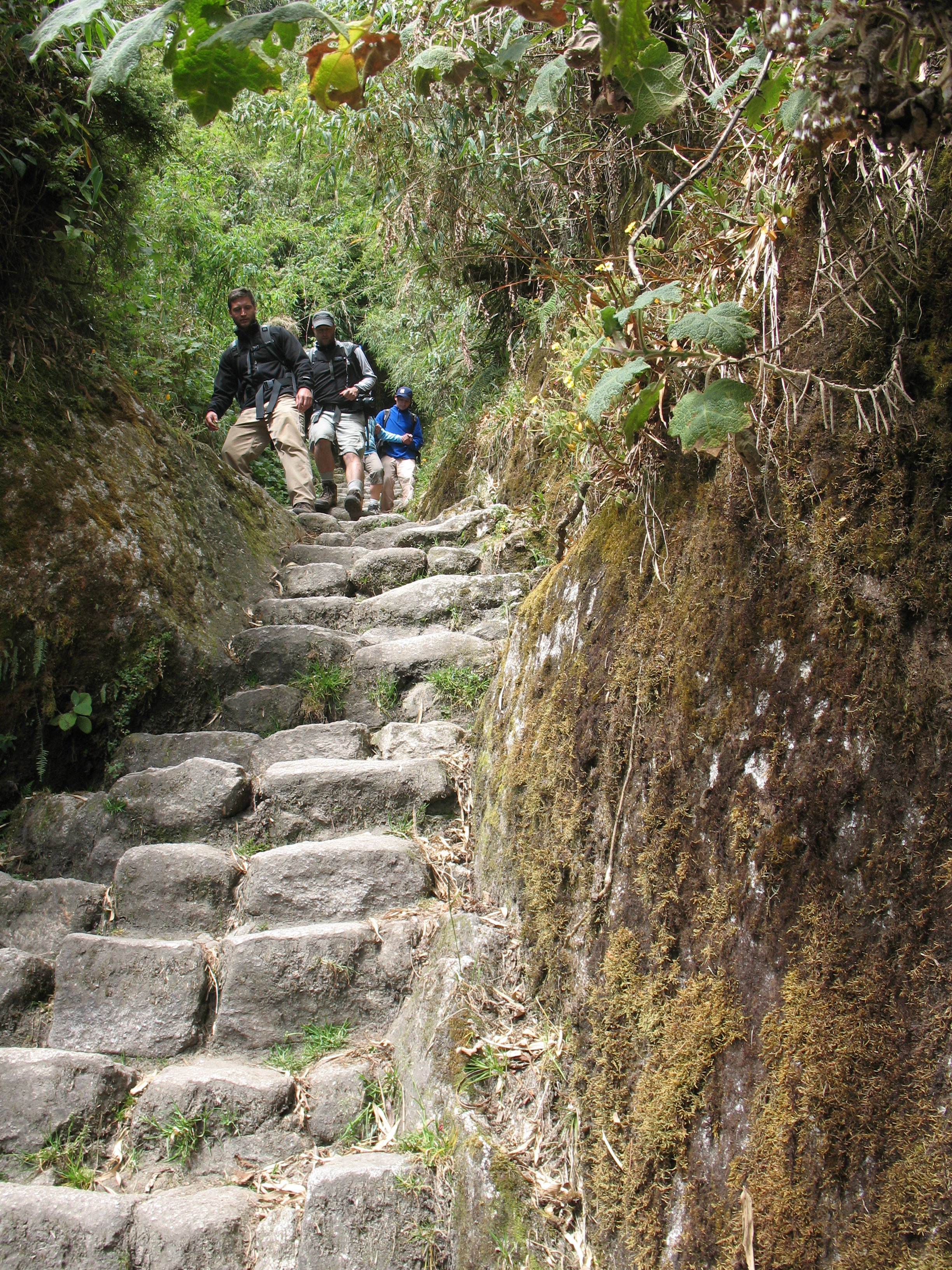
Workers spent most of the 1950’s and 60’s connecting the town of Aguas Calientes to the rest of the world. Then in the 1970’s discovered the ruins of Intipata, right next to where they had been working. We pause to rest and admire the view. We can see the town far below, nestled along the river. We can see the train as it winds its way to Machu Picchu. We know the end is in sight. We head down to Winaywayna for our last night of camp.
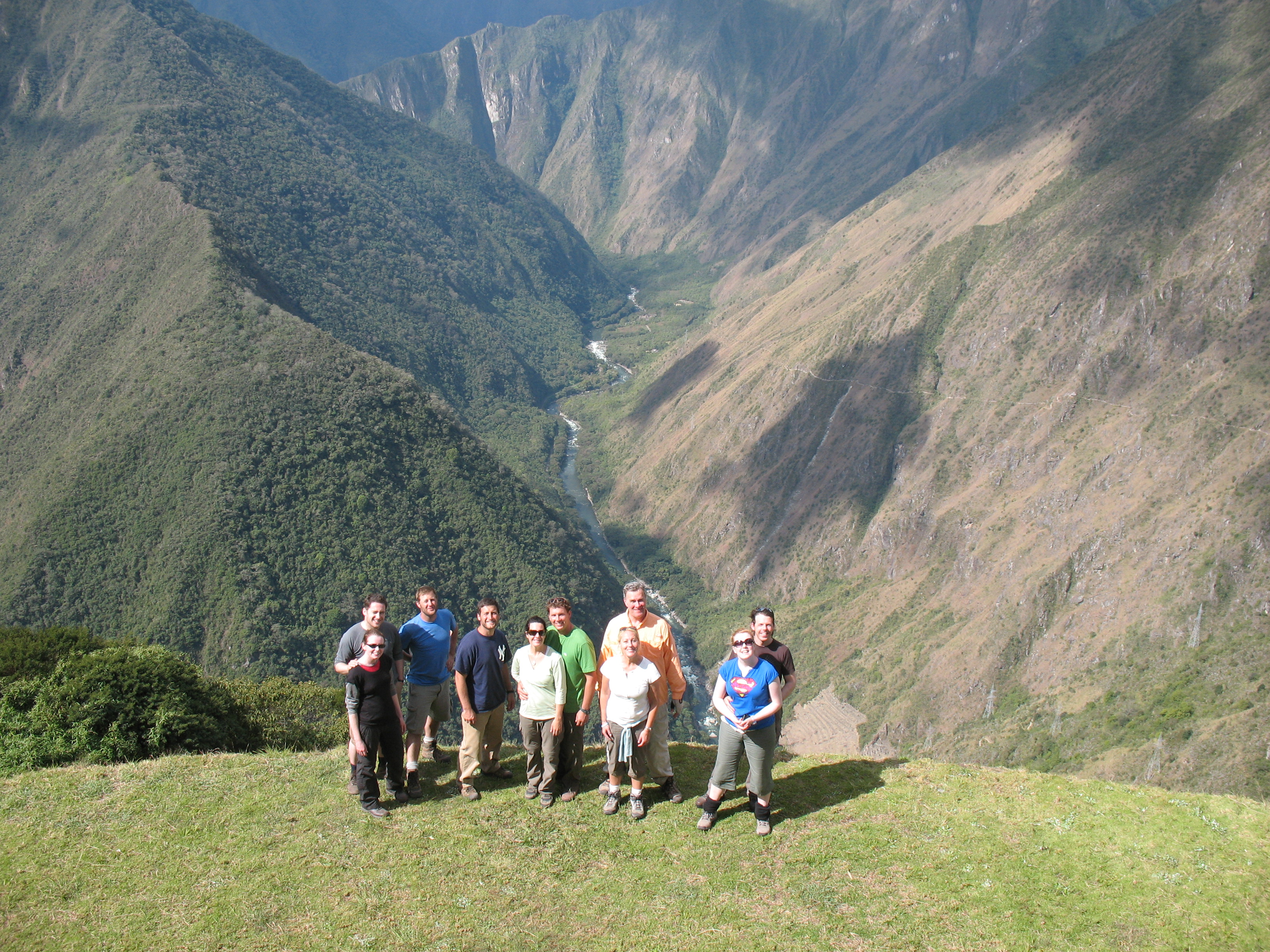
We are at Winaywayna by 1:30. Plenty of time for a hot shower before the crowds arrive. We celebrate our accomplishment with cold beer. I sit at the table, tears streaming down my face. Just a year ago I lay in the hospital, swearing to myself that I would walk again. And today I have climbed a mountain. Never mind the last three days, the distance I have come in the last twelve months overwhelms me.


We walk to the ruins of Winaywayna. We stop at the Temple of the Rainbow. There are seven windows that each frame a rainbow when the sun and clouds are right. We get a small taste of what we will see tomorrow.
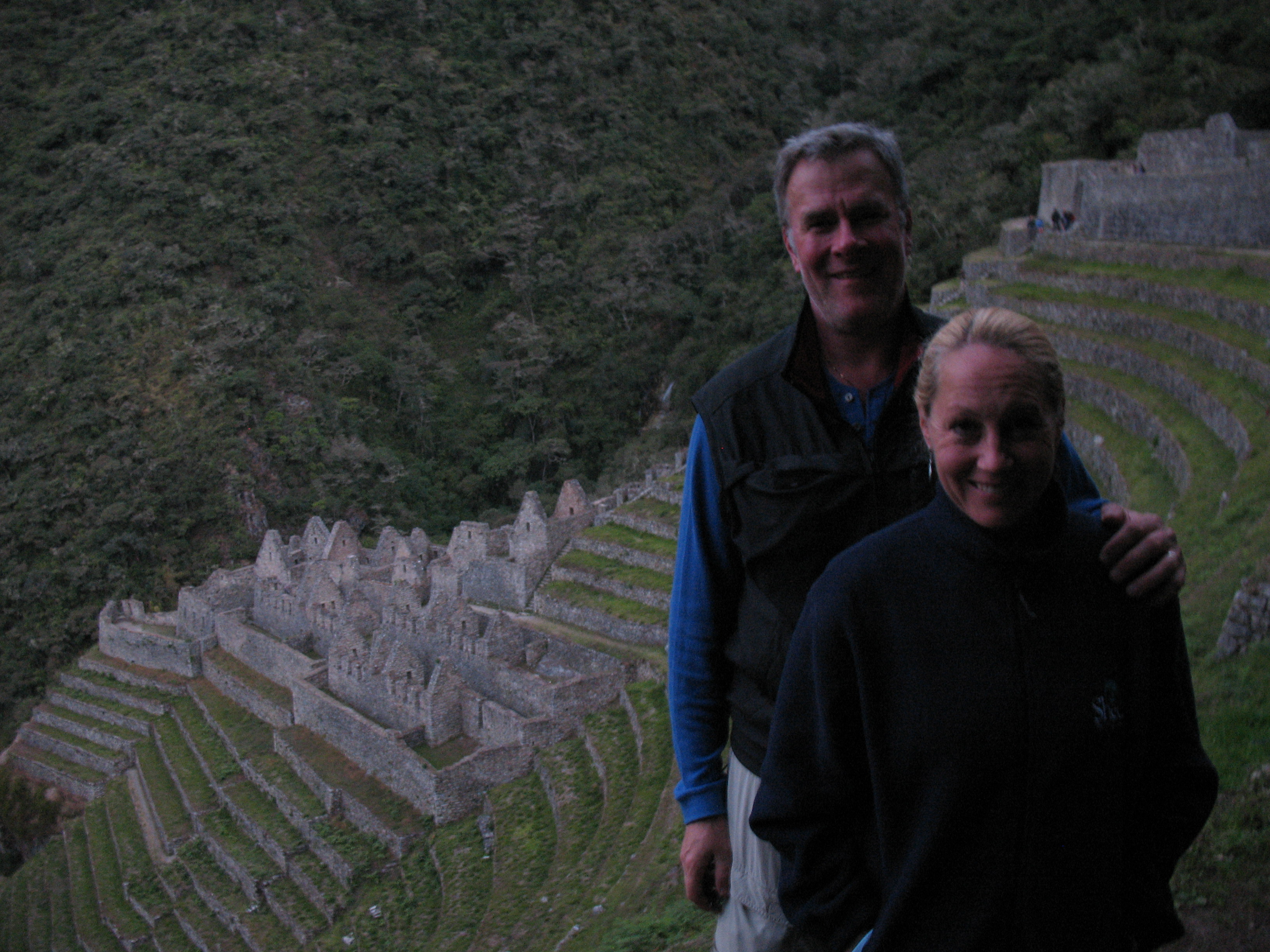
7/3 Thursday
4am wake up call. We’re already up, eager for the day to begin. Our group is second in line at the control point and by 5:30 we are on our way to Machu Picchu. It rained last night and the early morning air is heavy with mist. The sun has not yet risen and behind us stretches an eerie trail of bobbing lights.
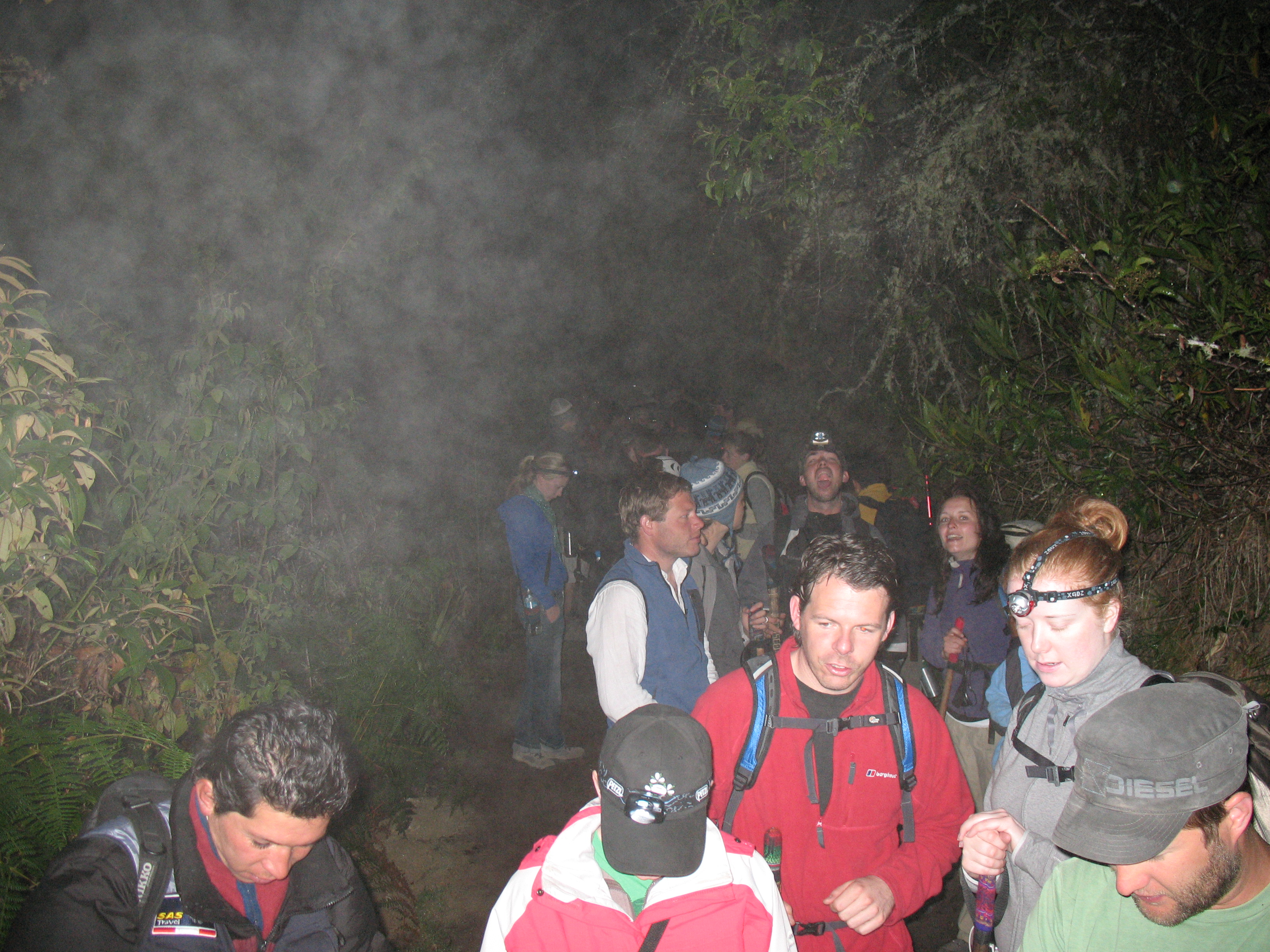
Gradually it lightens but there will be no sunrise at Intipunku, the Sun Gate, this morning. The stairs turn steep. I feel like I am climbing a ladder. More ruins appear out of the mist: a burial site for priestesses. I touch a small pile of stones and wonder who left them and why.

We are at the terraces above Machu Picchu. This first view is solemn and holy … nothing can capture the sheer physical presence of the place. The mountains surround the stone city like sentries. We descend through the checkpoint and walk among the ruins. It is an architectural marvel, an astronomical wonder, an engineering genius: a city of impossible construction. All tucked away in the middle of the Andes mountains.

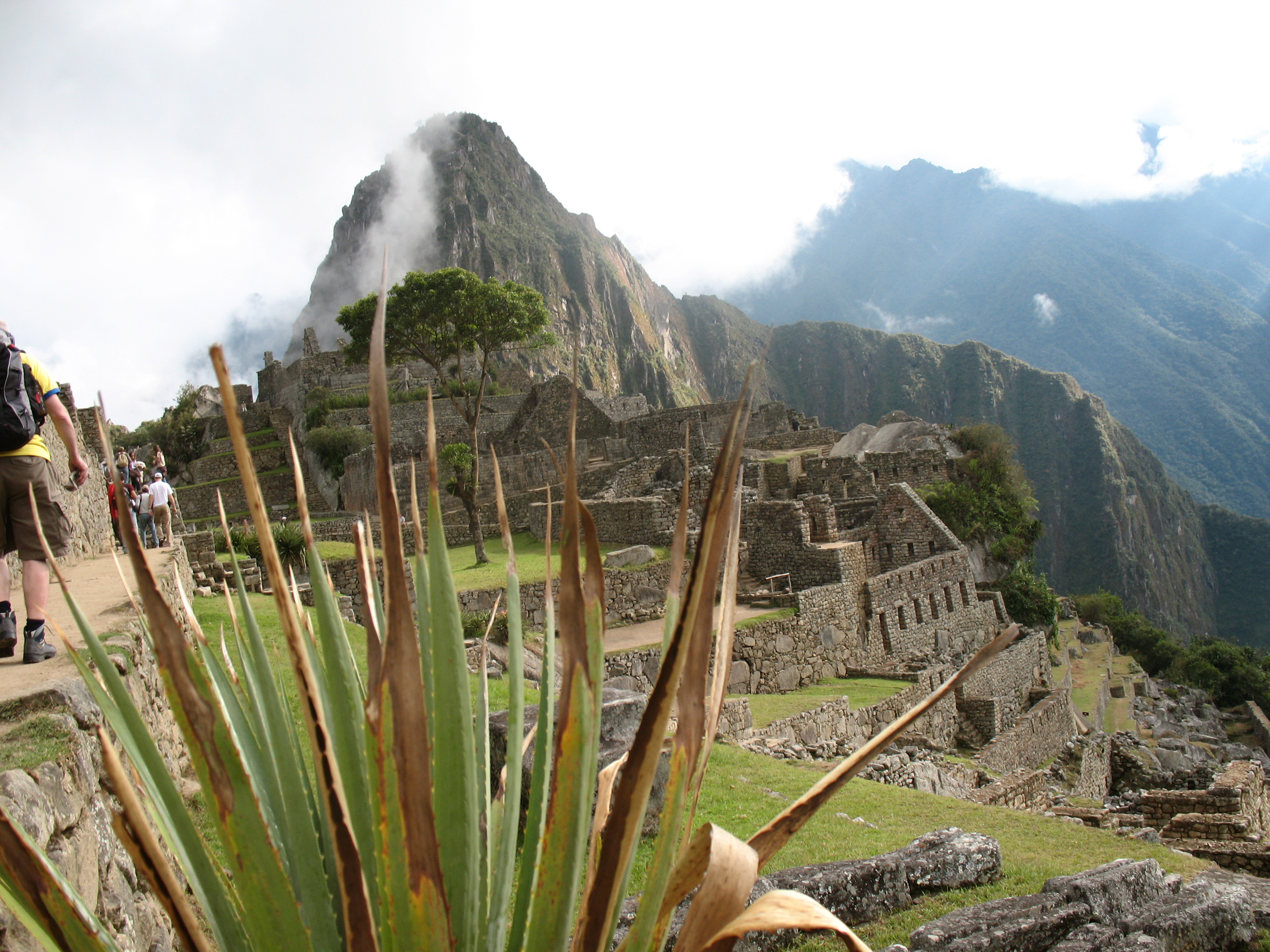
Virgilio continues our tour. We stop in a room that has 3 walls of blind windows. We say ohms into the walls and listen as the sound resonates around and through us. Next we climb to the top of the Observatory. A condor soars above our heads. Virgilio says we are blessed; it is only the second time in nine years he has seen a condor. He says we called it with our ohms.
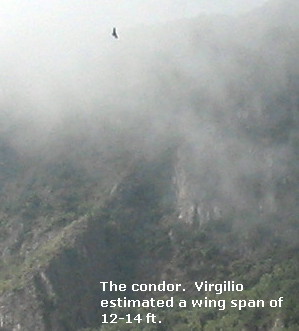

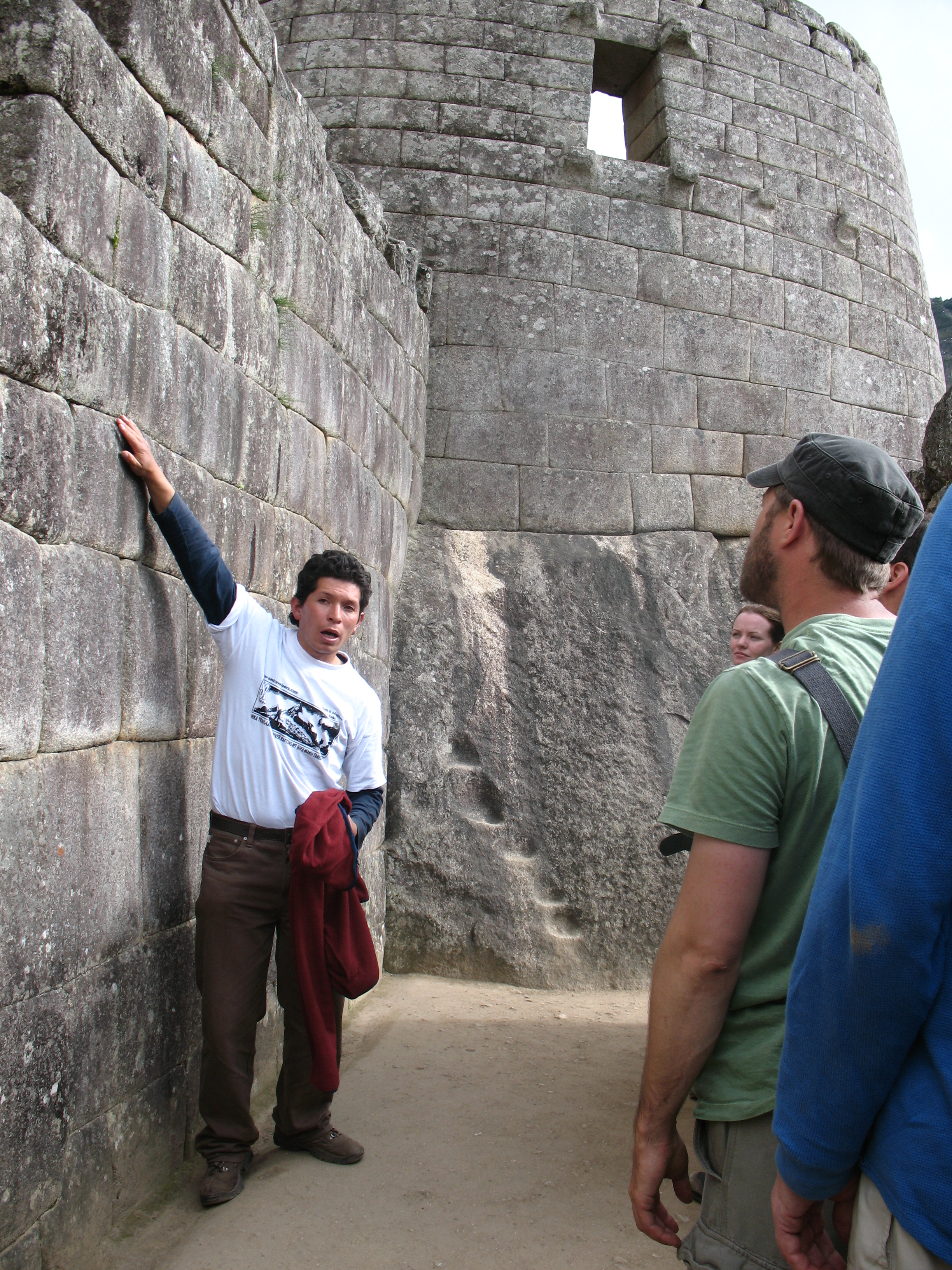
The group splits. The A-team wants to climb Wayna Picchu. It towers above the ruins, tall and steep, but with spectacular 360 degree views from the summit. We continue with the tour. A chinchilla scampers across our path. Lizards crawl along the walls. These present day inhabitants share this sacred city with the ghosts.

There is a holy feeling about the place – like a temple. We feel compelled to speak in soft voices. A group walks by laughing loudly. It seems somehow inappropriate.

We ride the bus down the mountain to Aguas Calientes where we meet the group for a celebratory lunch and goodbyes. We are staying the night in town: a chance to recharge. We skip the SAS hostel and check into our room at the Sumaq. It is a beautiful hotel under any circumstances but for us, fresh off the trail, it is the epitome of luxury. We are both too exhausted to fully appreciate what we have just accomplished.

The Inca trail is 49 ½ kilometers. There are many steep up and down hills with the highest peak over 4,200 meters. Nothing can describe the huge expanse of valleys, the towering peaks, and the glaciers rising even higher: the view around every turn more breathtaking than the last. We learned much about the Inca but there is so much more that we will never understand. Virgilio says for every answer there are a hundred questions.
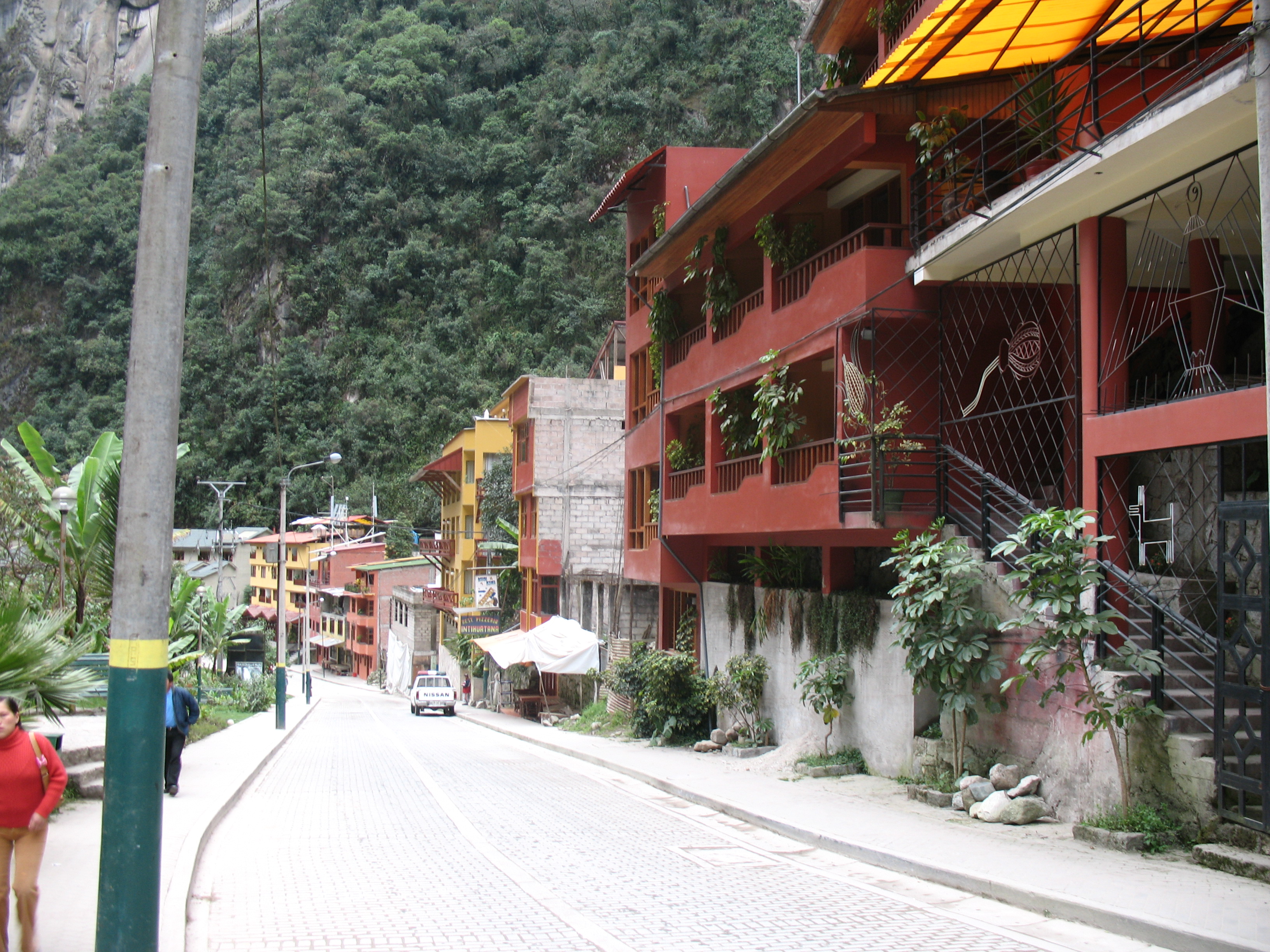
7/4 Friday
We take the 8:30 Vistadome train back to Ollantaytambo. Pretty as it is, the view along the river valley does not compare with the beauty of the trail. We look up to the top of the ridge, where we walked two days earlier, and think about all that the riders are missing. Music starts and a strange masked man dances through the aisle. Then an alpaca wool fashion show. The 90 minutes pass quickly.


In Ollantaytambo we arrange for a taxi back to Cusco. We feel we’ve arrived home when the driver drops us at Torre Dorada. Miss Peggy, Raphael, and the rest of the staff are eager to hear about our trip. Their eyes glow with pride as we talk about the magnificent trail and wondrous beauty of Machu Picchu.
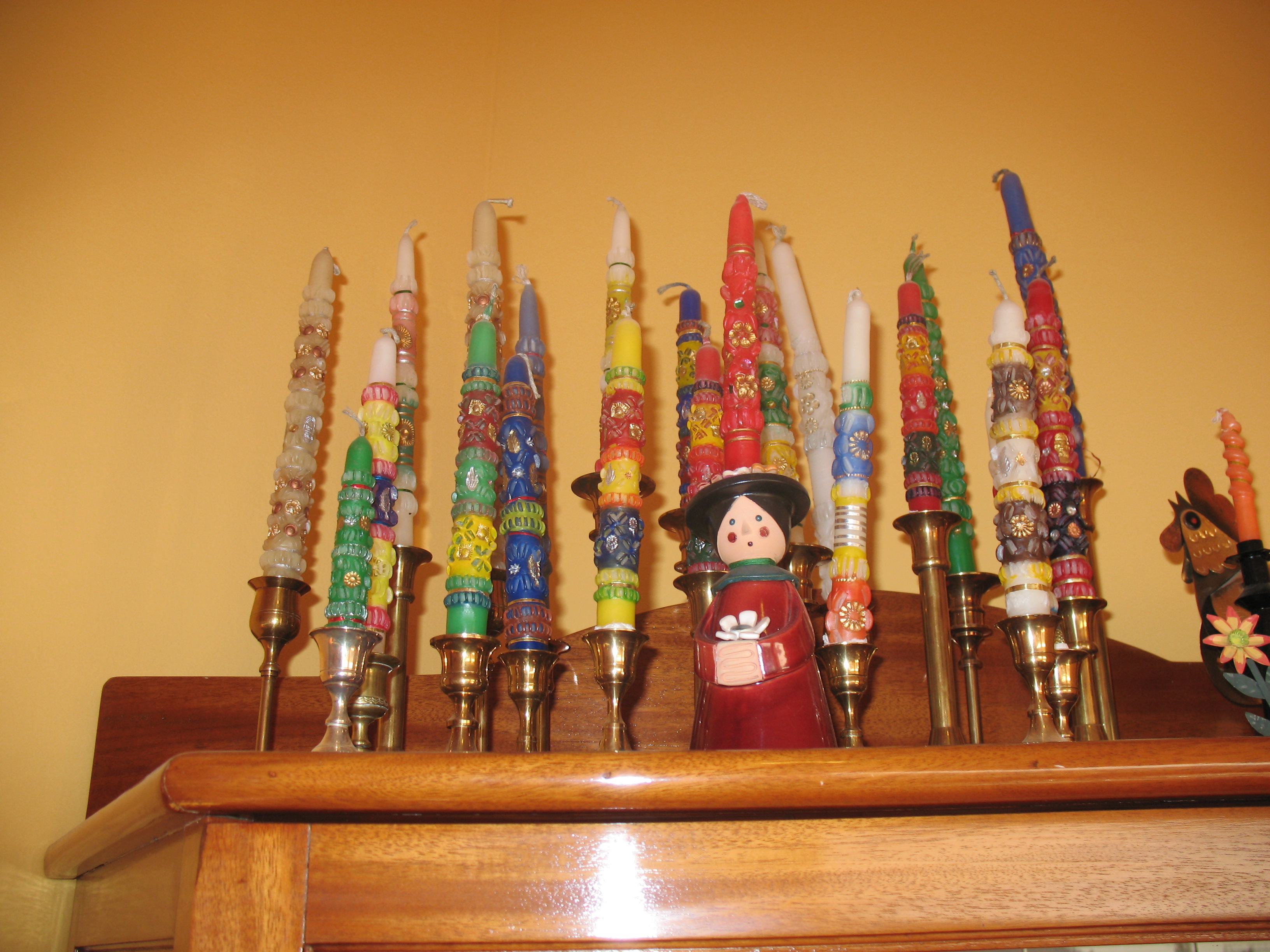
7/5 Saturday
We arrive in Lima. The sky is gray and overcast. That, combined with the exhaust fumes, makes the city seem ugly and polluted. The traffic is the worst we have seen. Vendors weave through the cars: scissors, air fresheners, cinnamon rolls. It’s a mobile flea market.

7/6 Sunday
Our 3:15 wake up call comes at 2:45 but we’re already up. The main square is a cacophony of cars honking and people milling about. We know New York never sleeps; apparently Lima does not either. It’s time to go home.
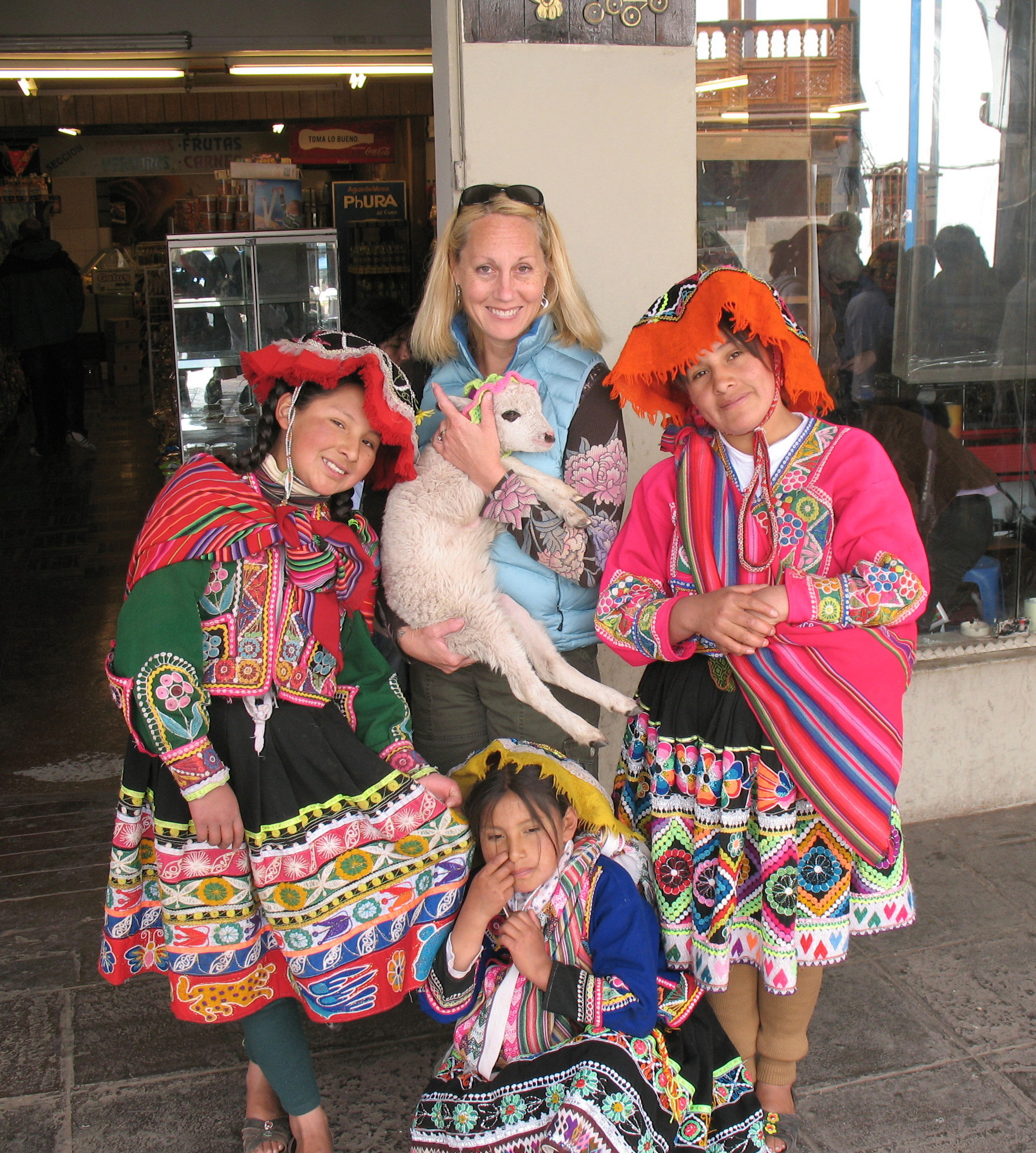
We promised ourselves that one day we would return and stay one night at the Sanctuary Lodge, located outside the entrance to Machu Picchu. In May of 2017, we did just that. You can find photos from that whirlwind weekend here:
TG: https://www.flickr.com/photos/werdnanilmot/albums/72157682256361531
JET: https://www.flickr.com/photos/jetomlin/albums/72157684418029466


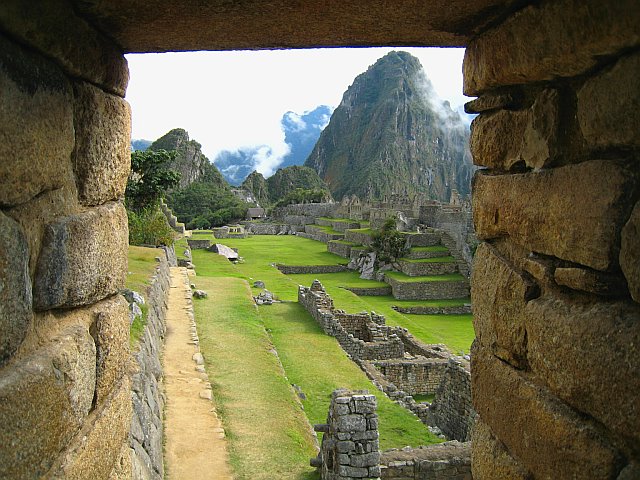


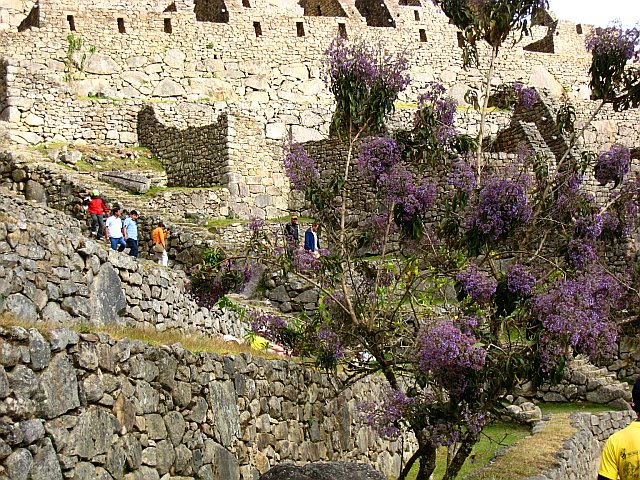




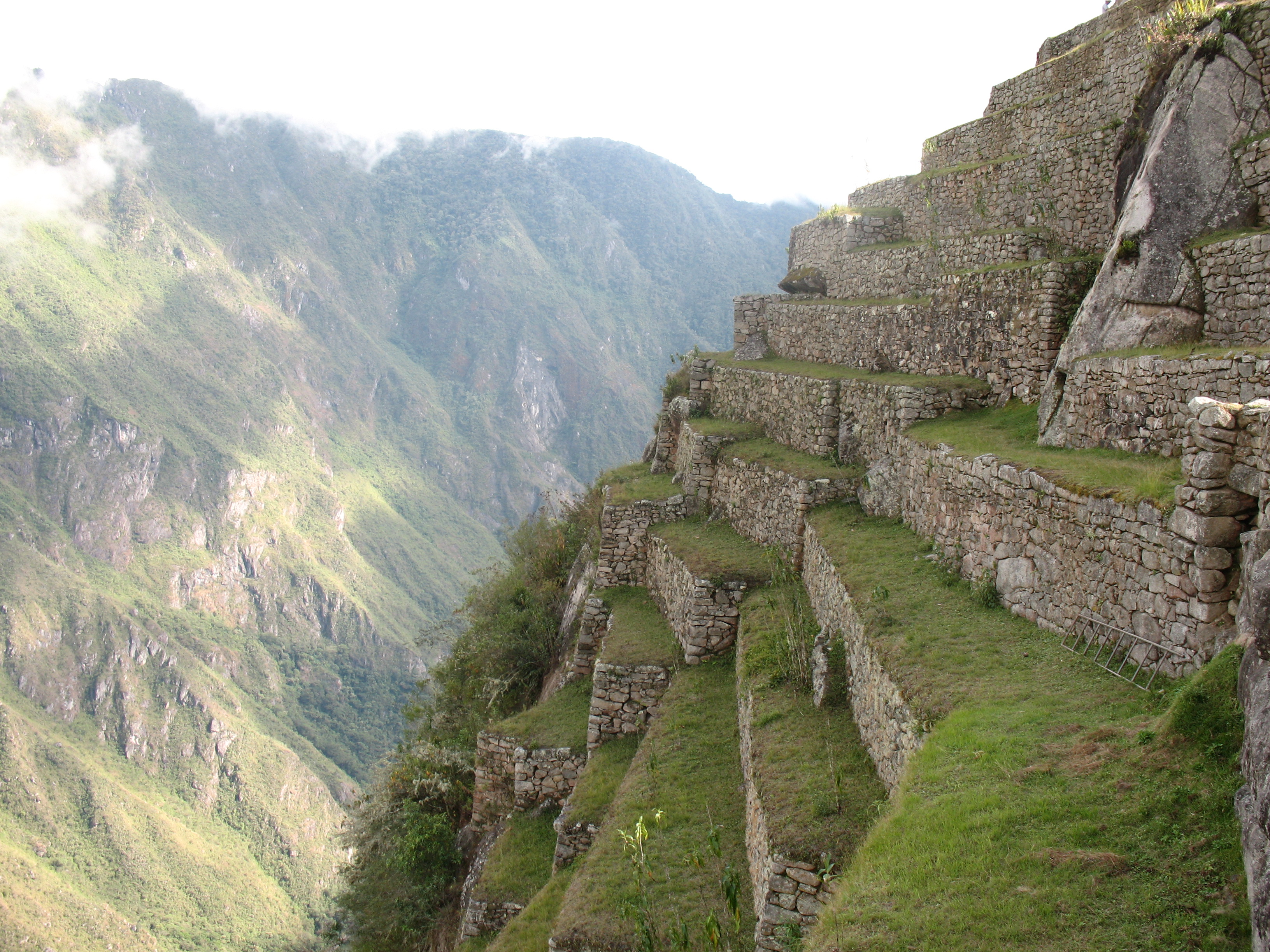


Splendid!!!
LikeLike